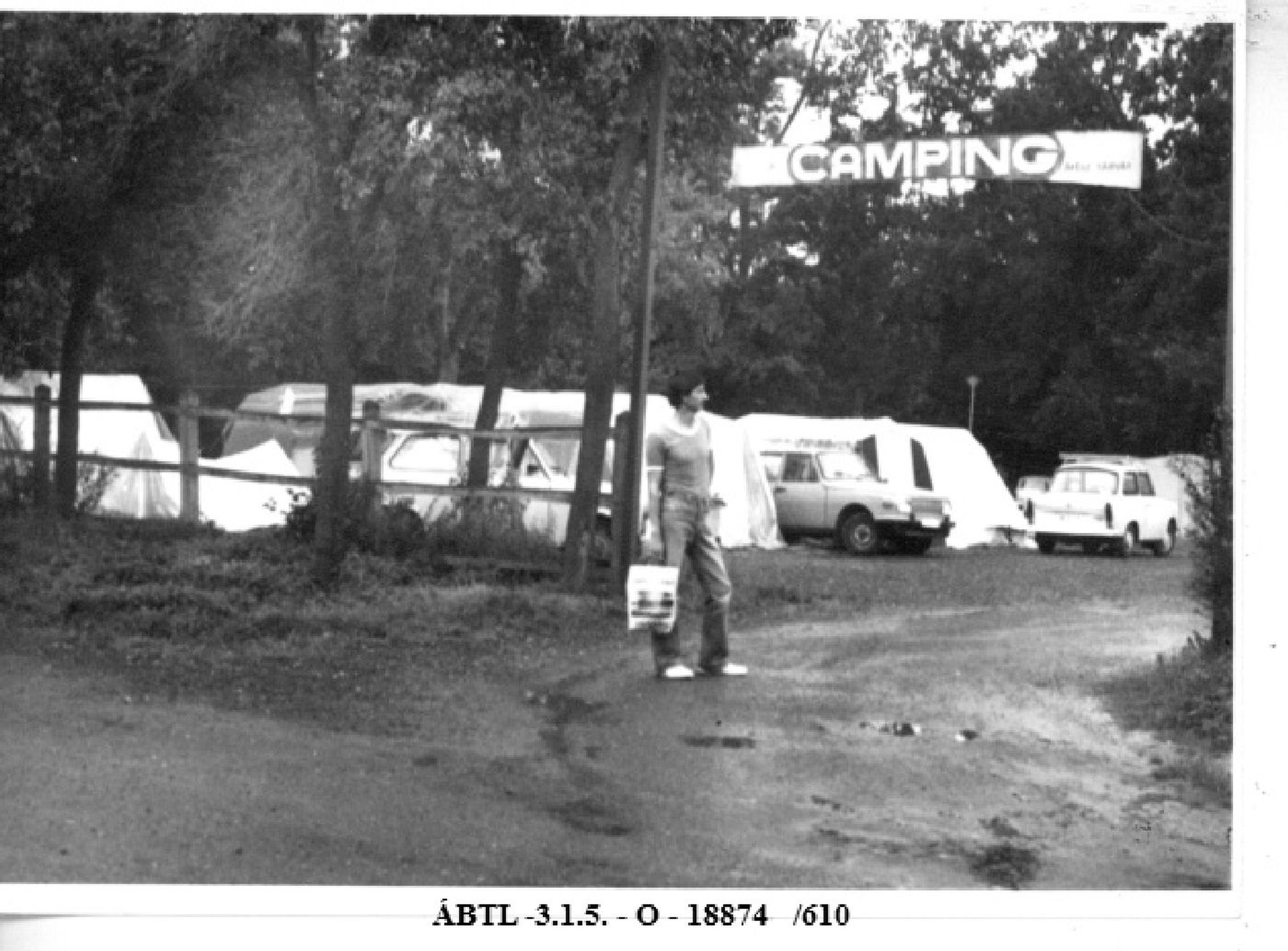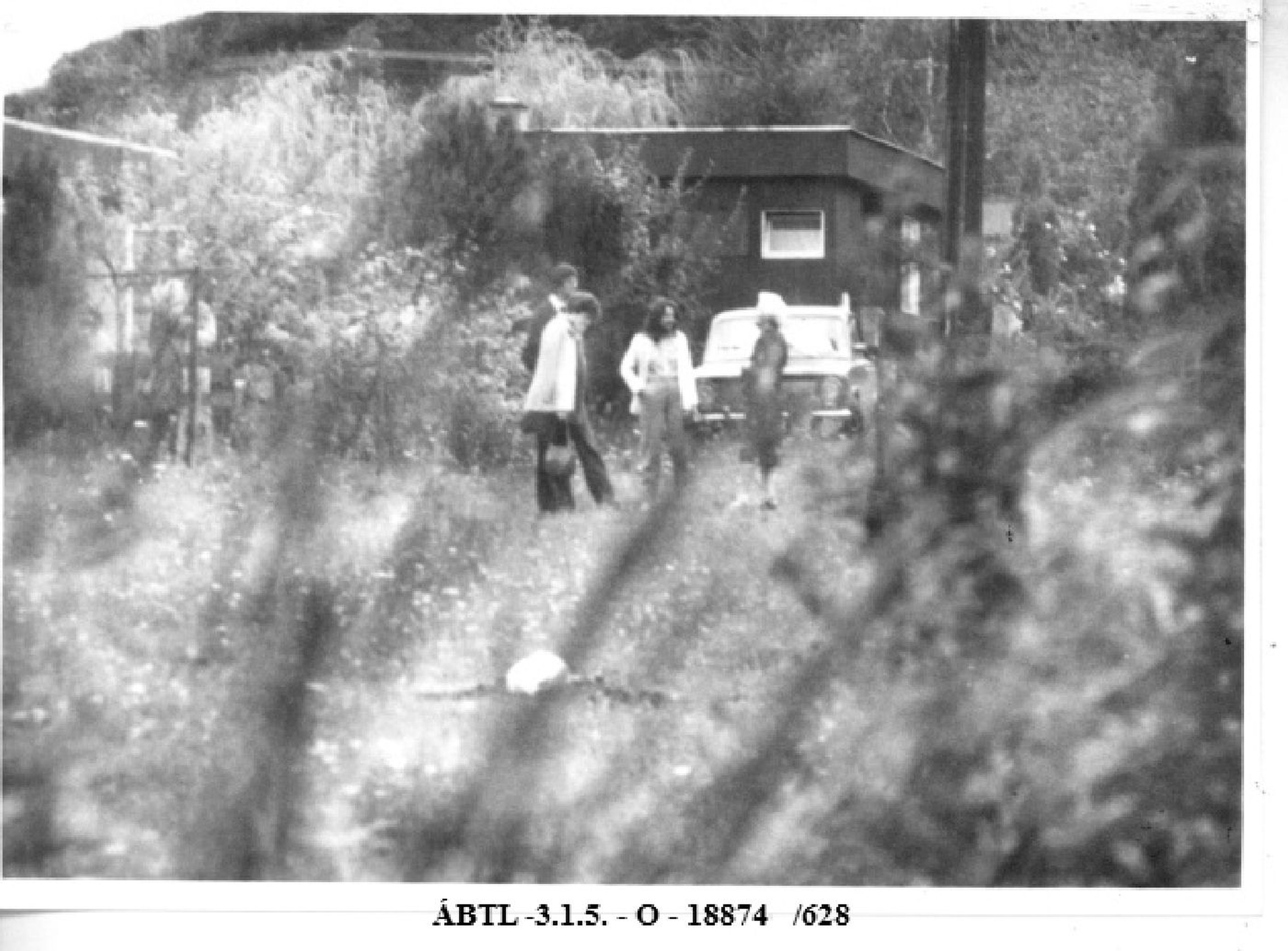The sources on “The campers” offer more insight into the ways in which the state kept a group like this under observation than they do into the everyday life and activity of this group. The alternative Christian Community was organized outside of the official church, and it united believers who did not belong or did not feel bound to a specific denomination. These religious people became visible through written and visual documents which were made by the case officers and the secret agents. The image we have of this group is not clear and not nuanced, and not simply because the photographs made by the agents who were hiding behind trees and bushes are obscure or unclear.
Christian Community still exists today, but the members are very unsociable, uncommunicative, and suspicious of the interests of researchers. Kinga Povedák has pursued research on this community and similar religious groups. She faced numerous difficulties: the group does not offer researchers documents (if they own archive sources at all), and the members do not give interviews. Consequently, the COURAGE Registry description cannot draw on other primary or secondary sources, apart from the related documents and photos in the state security archive.
The proceedings initiated by the state against the group included observation by the state security forces, the deployment of a secret agent, and police identity checks and interrogations. We have no information concerning arrests or atrocities committed against the members of the group. The measures adopted by the state resulted in the creation of agent reports, summaries, minutes of interrogations, and a rare photo collection. Because of the aforementioned facts, this source is considered the only source on the community. The visual documentation created by the state of the members of the group going camping offer insights into the practical sides of the work of the state security forces.
These records belong to the operative photos in the ÁBTL. The Department III/III of the State Security Division of the Police Headquarters in Zala county opened a dossier for “The campers” on 15 December 1983. According to the justification, deep suspicion of the abuse of the right of assembly emerged, and it became necessary to prove that illegal religious activity had been underway. The officers wanted to collect data about the nature of the allegedly social danger posed by the group. The folder includes 680 pages.
The group was tied geographically to Budapest and Zalaegerszeg. According to the Ministry of Interior and the confessions made by the members, the community in Budapest inspired a family in Zalaegerszeg to create a local community in the late 1970s. The community functioned with 8–10 members under the leadership of Zoltán Bubics. They held meetings every week, and the members from Budapest joined them monthly. They organized a camping trip in Vas County on 11–21 August 1983, at which about 70 participators arrived from different parts of the country. The following year, the group repeated this meeting, but the documents contain no information concerning any similar occasions.
Besides having allegedly committed the crime of illegal assembly, the group was blamed for breaking restrictions on the press. One of the members, Vilmos Kaczor, printed illegal religious issues at his workplace. A colleague of his reported on him. The agent with cover name “Rábai” stated that Kaczor had engaged in oppositional conduct and that he was listening to Free Europe Radio. The state security forces used numerous methods to collect information. They sought people among the members of the group who rarely attended the meetings and who, they thought, could perhaps be recruited as agents. The officers assumed that these people were not that attached to the group or its beliefs. They do not seem to have been able to find other people who would work for them as agents as only all of the reports were submitted by “Rábai.” The political police investigated the members’ workplaces, too. They were interested in the members’ roles within the community, the positions they occupied, their connections to other religious communities, the assumed hierarchical relationship between the community in Budapest and the community in Zalaegerszeg, the geographical network, connections to people or organizations abroad, etc. Despite the complexities of this work, they were effective and found a lot of personal data.
The overwhelming majority of the members were intellectuals, according to the reports. Two physical laborers were invited only because of the interests of the group. The aforementioned Vilmos Kaczor printed religious books, and the other person, Lajos Simon, was a photographer who made photos of the events. Admission to the group was granted only after a strict vetting process.
Agent “Rábai” got in touch with the community with the help of his colleague, Kaczor. He was the initiator. He offered his services to the political police. He attended the meetings, but he was not invited by the group to join them for the camping trips. “Rábai” reported on these occasions: the members read chapters from the Bible, and everybody interpreted the texts and added their own thoughts. The members then voiced their longings and complaints and asked Jesus to help them in the future, as well. The leaders demanded focus and concentration. Participants were not allowed to talk about other topics during the meeting, and they were not allowed to smoke.
“Rábai” tried to discover the community’s aims, but his efforts were not crowned with success. He asked the members about their principles. Zoltán Bubics told him that their beliefs were based on Jesus’s teachings and the New Testament. They could find Jesus everywhere, so it was not necessary to go to church. According to “Rábai,” the goal of the camping excursions was to create a sense of togetherness, to discuss their plans, to educate the leaders of the counties, and, finally, to hold a wedding ceremony for two members of the group.
However, “Rábai” was not invited. Two officers were used instead, and they engaged in fishing as a cover for their work as observers. The folder on “The campers” includes a lot of action plans which exemplify the inner logic of the state security forces, the nature of the observation techniques, and the methods and difficulties of fieldwork. The documents include secret codes, messages, maps, and other data for preliminary organizational work. The officers were equipped with photographic cameras, a spy-glass, an official gun, a radio, a flashlight, a fishing outfit, and beach clothes.
The campers’ use of space was informative for the agents: the group set up their tents in the official camp site, but separately from other vacationers. This separation was regarded as an attempt to conceal their banned activity by the political police. One of the members was not accommodated in the campground, but rather had a separate bungalow. This helped the police identify this person as the main leader of the community. 100–110 photos were taken of the initially 30 and later 70 people who took part in the camping excursion and, later, in the wedding. 23 car registration numbers were recorded. During the expansive investigation, the state security forces determined that 24 of the 41 people were provably members of the “illegal sect.” The police checked and interrogated people who took part in the next camping excursion in the summer of 1984, so the minutes of this occasion were put in the folder as well.




